
Breaking Down The Bubble Theory
A complete guide to the science-backed, results-driven approach that's changing the lives of thousands of Aggressive & Reactive Dogs worldwide.
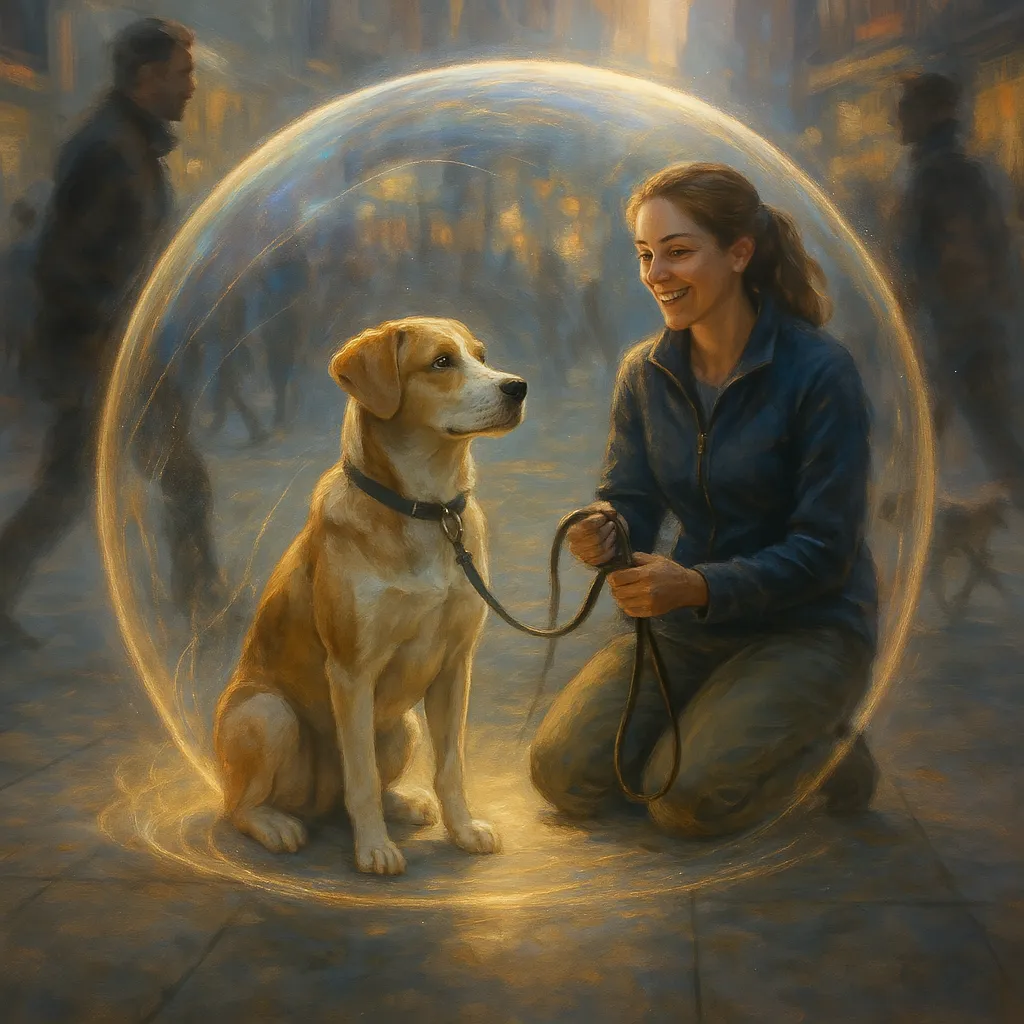
Living with an aggressive or reactive dog isn’t just exhausting — it’s overwhelming. The stress, the fear, the embarrassment…
And to make it worse, every trainer and every article seems to contradict the last. One promises quick fixes, another says it’ll take years. And you’re left feeling stuck, confused, and hopeless.
If you’ve landed here, chances are you’ve already heard about the Bubble Theory — and maybe, just maybe, you’re wondering if this could finally be the solution you’ve been searching for. You’re in the right place.
The Bubble Theory has helped thousands of dog owners take their aggressive or reactive dogs from unpredictable and untrustworthy… to calm, confident, and under control. It’s not magic — it’s science. And when done right, it works.
On this page, we’ll break down exactly what the Bubble Theory is, why it works, and how you can use it to finally create lasting change with your dog — no matter how tough your situation feels right now.
Fair Warning: While the Bubble Theory is highly effective, it's not a magic pill solution. It requires time, effort, and consistency to see meaningful change. But we can assure you that it’s worth every single second!
What Is The Bubble Theory?
The Bubble Theory is an umbrella term we coined here at Trail & Bone — an intuitive label to describe a collection of proven training techniques, games, and exercises designed specifically for rehabilitating aggression and reactivity in dogs.
Some of the most well-known methods that fall under the Bubble Theory umbrella include:
Behavior Adjustment Training (BAT) created by Grisha Stewart
Constructional Aggression Treatment (CAT) created by Kellie Snider,
Look At That (LAT)
Engage-Disengage
and many others…
At the core of these individual exercises is a focus on your dog's emotional threshold—or what we call "The Bubble."
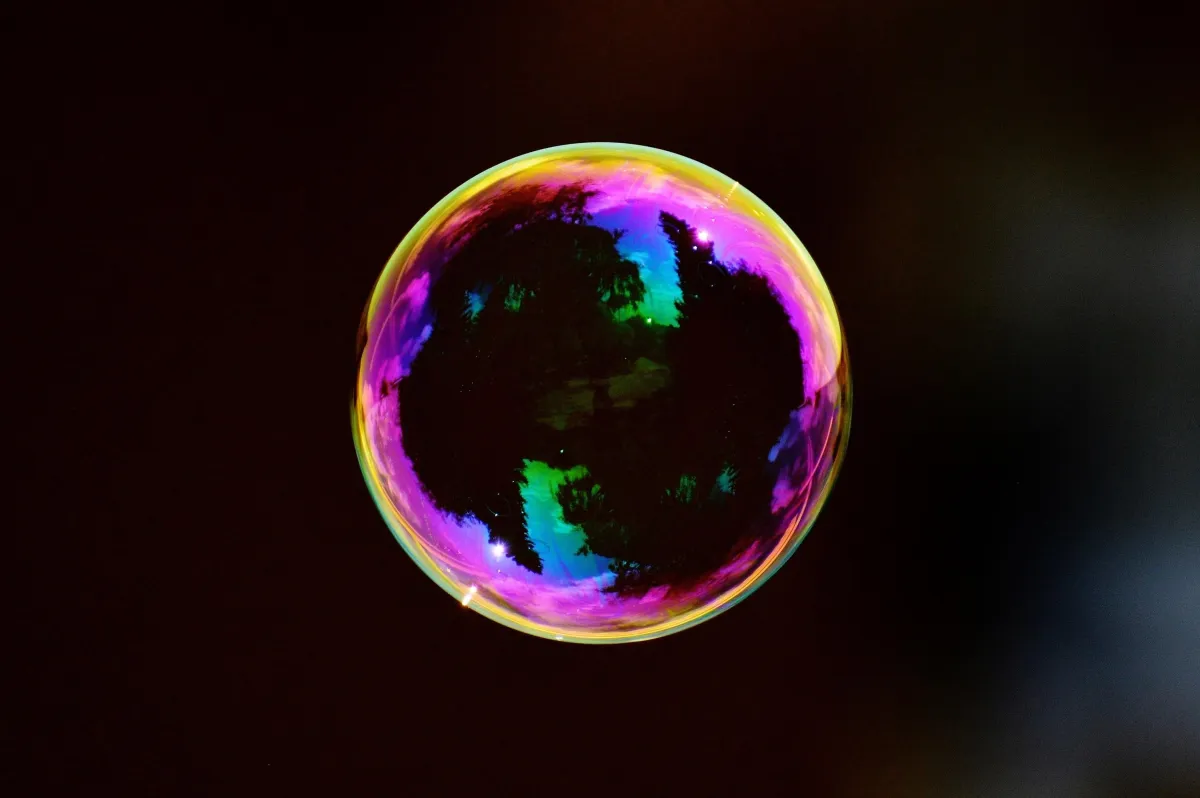
This bubble represents the amount of space they need between themselves and their trigger before they explode into barking, lunging, or worse.
For some dogs, that bubble might be 50 yards from another dog. For others, it's 10 feet from a stranger. The size changes based on an infinite number of variables, including the environment they’re in, the trigger that’s nearby, who they’re with, and even your dog's mood that day.
Shrinking The Bubble
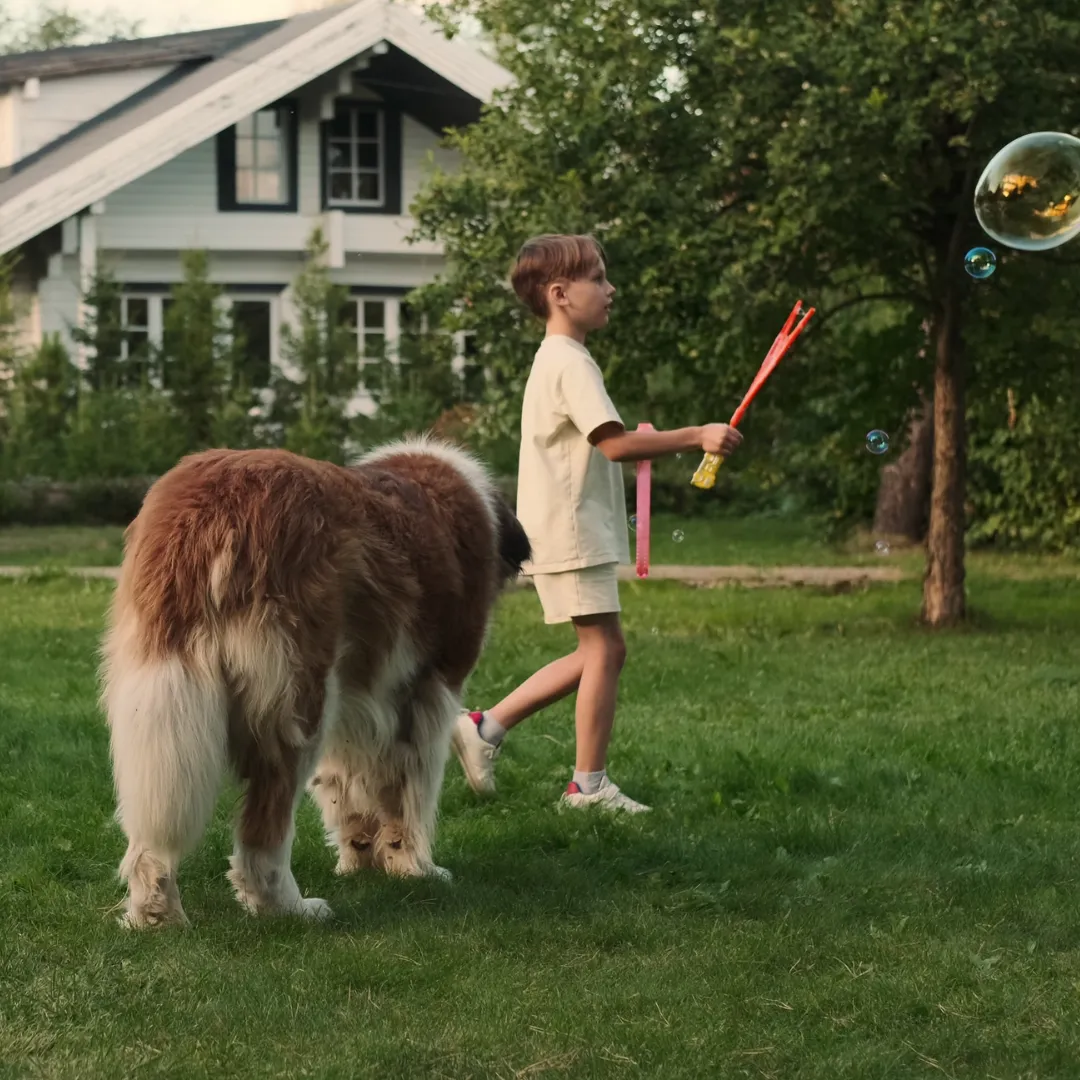
One of the core components of the Bubble Theory is understanding that your dog’s bubble can’t be erased through punishment, bribery, or wishful thinking. That’s just not how dogs work.
Every dog, even the calmest and most confident, has a limit. A point where they start to feel uncomfortable, overwhelmed, or unsafe. When that limit is crossed, they react. That’s not bad behavior. It’s biology… Fight or flight.
Which is why the Bubble Theory isn’t about forcing your dog to tolerate what they aren’t ready for. It’s about shrinking that bubble safely and gradually, on your dog’s terms, so they can feel calm, confident, and under control in more situations—without needing as much space to feel safe.
And as the bubble shrinks, something powerful happens...
Your dog stops living in constant survival mode. Instead of reacting impulsively every time they feel uncomfortable, they can actually engage their thinking brain. They learn to pause, assess, and figure out what’s a real threat, and what isn’t.
Over time, the distance your dog needs gets smaller. The barking, lunging, and reacting fade. The world feels less overwhelming. And your dog becomes more capable of handling it.
Space is the Reward
Ask yourself this: Every time your dog barks, lunges, or snaps… what happens?
People pull their dogs away...
Strangers cross the street...
Guests step back...
Delivery drivers go back to their trucks... (sure, they were leaving anyway, but your dog doesn't know that!)
Over and over again… the “threat” goes away. So guess what?
In your dog’s mind, their aggressive reactions worked perfectly! They got exactly what they wanted…
They got Space.
This means your dog was rewarded for the barking, lunging, and snapping.
So their brain burns it in… deeper and deeper.
And they learn "This is how we stay safe."
And so they do it again.
And again.
And again.
Space is the “Invisible Reward” your dog craves above all else.
And they’ll do whatever it takes to get it.
Why Is This Important?
Because it explains why your dog ignores your yelling, your leash corrections, your treats… in the heat of the moment, none of that matters.
Because the only thing your dog truly wants is space.
And when barking, lunging, or snapping makes the scary thing go away, that behavior gets reinforced — whether you realize it or not.
The Bubble Theory flips this entire dynamic.
Instead of your dog having to explode to get space, we teach them that staying calm, focused, and relaxed is what creates distance from their trigger.
We reward the behavior we actually want (calm) with the thing they actually want (space).
The Exception: Frustrated Greeters
Of course, not every dog reacts out of fear or defensiveness. Some dogs have the opposite problem. Their reaction isn’t because they want more space — it’s because they want less.
These are the dogs who lose their minds because they’re desperate to greet, play, or interact… but they’re stuck on a leash.
The good news? The principle is exactly the same.
We figure out what your dog truly wants — and then we make calm, polite behavior the path to getting it.
For frustrated greeters, that means calm behavior earns them controlled access to the trigger.
Lunging, barking, and pulling? That only increases distance.
The Bubble Theory applies either way — because whether your dog wants space… or connection… the solution is the same:
Calm behavior gets rewarded. Exploding gets them nowhere.
Enhanced Neuroplasticity
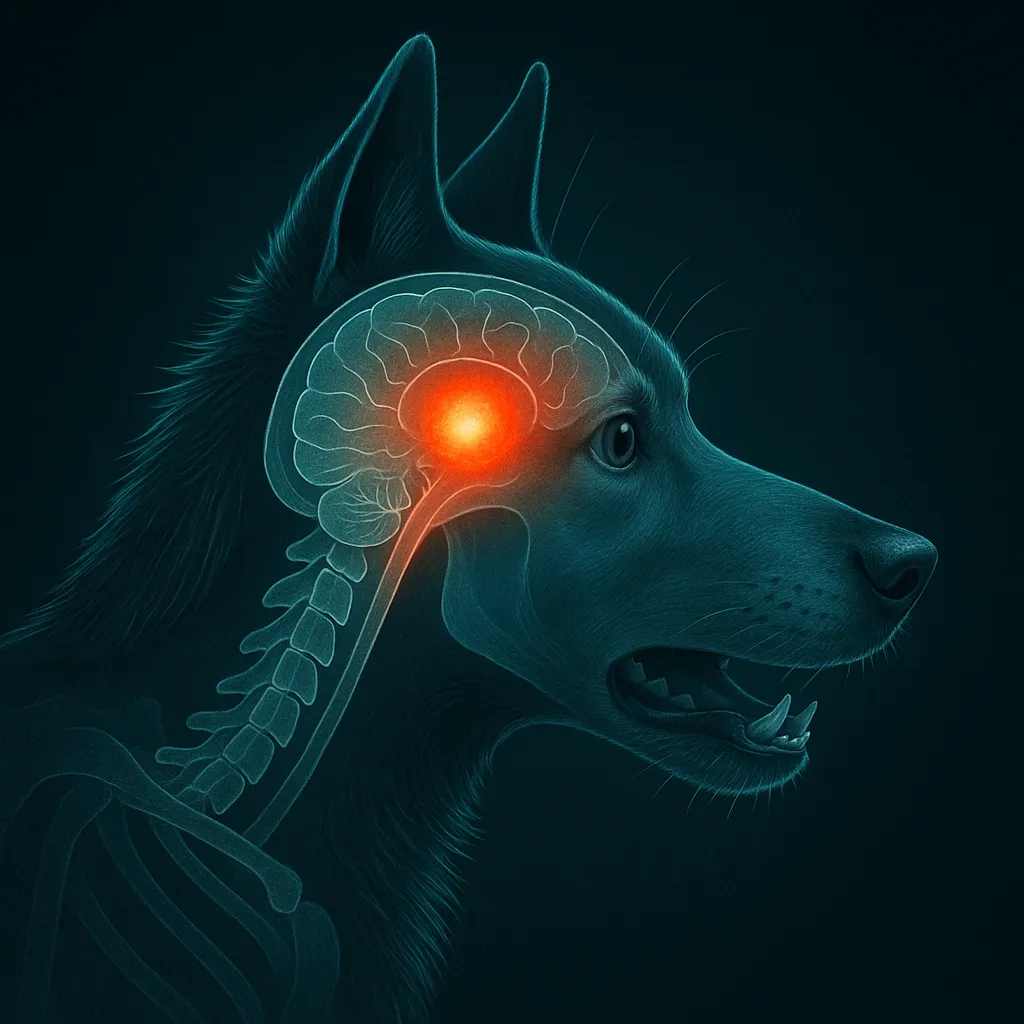
Now, you might be asking yourself:
"How can you possibly teach your dog to be calm around their triggers… when the mere sight of one sends them into a complete meltdown?"
It’s impossible.
That’s why so many trainers resort to punishment or total avoidance — because once your dog tips over that line, their thinking brain shuts off. You can’t teach. You can’t reason. You can’t make progress.
But here’s what most people miss…
There’s a window of opportunity — a critical moment — that happens before your dog explodes.
A moment when your dog has noticed the trigger. Their body is on high alert. They’re deciding what to do… but they haven’t gone over the edge yet.
This moment exists right at the edge of the bubble — your dog’s personal space, their emotional threshold.
At this edge, your dog’s brain is in a unique state called Enhanced Neuroplasticity. That’s a fancy way of saying… their brain is open to rapid change and learning.
They’re alert, but still thinking.
Nervous, but still processing.
Their survival brain hasn’t taken over yet — which means you can actually get through to them.
This is where real change happens.
The Bubble Theory teaches you how to:
Recognize the signs your dog is nearing the edge
Keep them below that tipping point
Use calm exposure and space as rewards
Build new associations with their triggers
Instead of their bubble popping and panic taking over, your dog learns that they can stay calm, stay safe, and stay in control — even near their biggest triggers.
The more you practice at the edge, the more their bubble shrinks.
The more their bubble shrinks, the less they react.
And the less they react, the more confident they become.
Real-Life Examples
You might be thinking, "Okay, the Bubble Theory sounds well-thought-out, but does it actually work in practice?" And that's a fair question to ask. Let's go beyond the theoretical and look at some genuine, real-world examples of the Bubble Theory in action.
Case Study: Mackey, the Human-Aggressive Terrier
Here is a clip of one of our trainers, Ashley, acting as a human helper for a terrier-mix, Mackey.
Mackey was very human-aggressive and his owner had hired 2 trainers before working with Ashley. One trainer had spent a full hour with them and still was not able to get close to Mackey.
But in this clip, you’ll see how using a core part of The Bubble Theory, CAT, Ashley is able to get right next to a happy Mackey in 5 minutes.
This clip demonstrates the real-world effectiveness of the Bubble Theory and how it can be adapted to suit different dogs with varying issues.
But remember, while the progress shown here may appear quick, long-lasting results require consistent effort, time, and a well-thought-out strategy.
No aggressive or reactive behavior will ever be fully rehabilitated after just 1 Bubble Theory session, and that’s no different for Mackey.
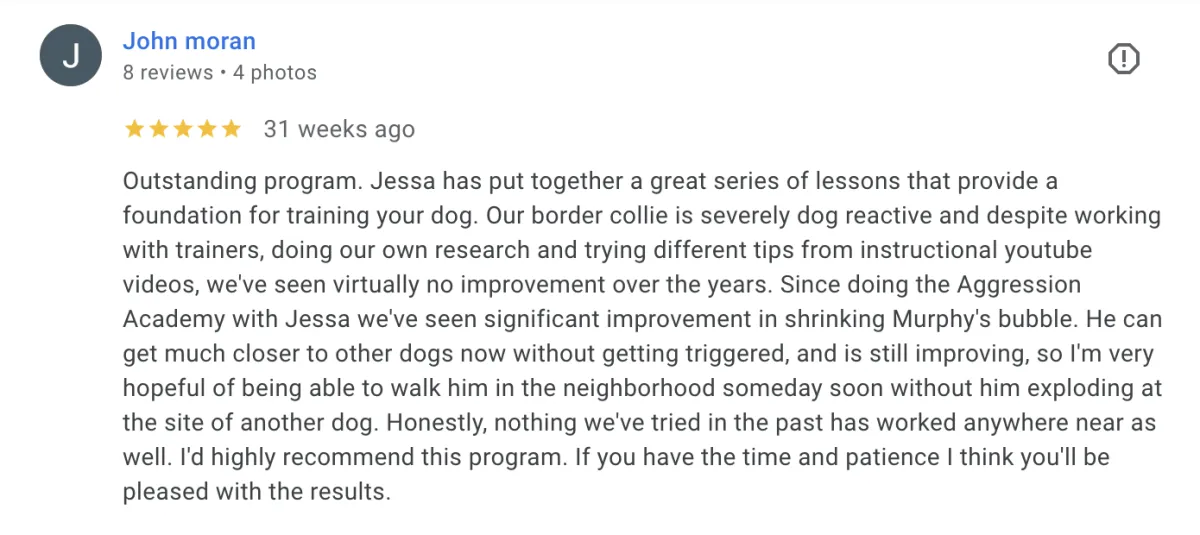
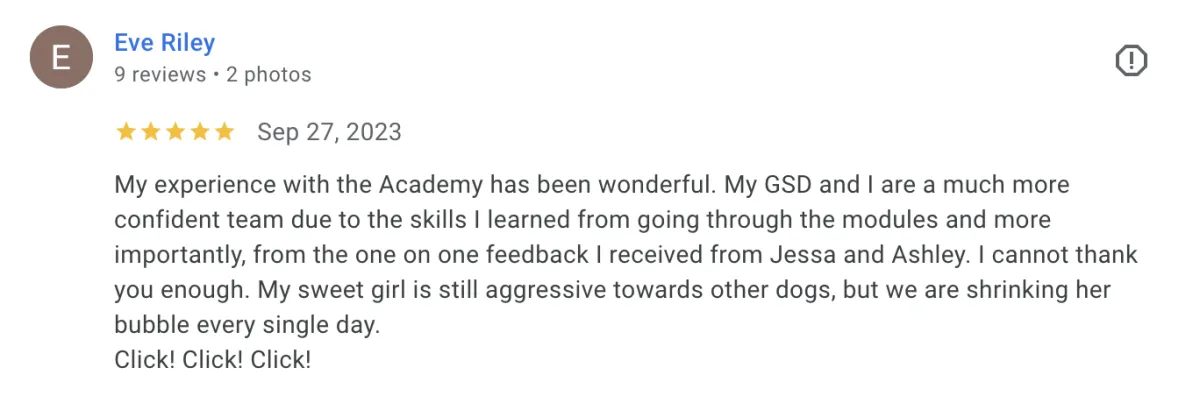
Core Components of the Bubble Theory
So far, we've explored what the Bubble Theory is and delved into the scientific underpinnings that make it tick. But what exactly are the vital elements that bring it to life so effectively in real-world scenarios? Unpacking these core components will give you a more complete understanding of the Bubble Theory's transformational capability.
Identifying the "Bubble"
First and foremost, the success of the Bubble Theory hinges on your ability to accurately identify your dog's emotional threshold, or what we refer to as the edge of their "bubble."
This requires a finely tuned understanding of your dog's body language. From a raised hackle or flattened ears to more vocal cues like a subdued growl, each dog has its unique set of signals that reveal they are nearing their limit.
Identifying this threshold is more than just an art; it's a skill that you'll develop and refine through careful observation and practice.
When you enroll in the Aggression Academy→, you get access to our “Speaking Dog” infographic that demonstrates over a dozen of the most common stress signals, calming cues, and displacement behaviors… all completely free!
Fundamentals First
Before diving into the more advanced aspects of the Bubble Theory, a strong foundational skill set is crucial. Your dog needs to have built up good obedience skills as well as high levels of impulse control and a robust sense of self-confidence.
Why?
Because these foundational skills act as the pillars upon which the Bubble Theory is built. Without a strong foundation, you'll find it challenging to implement the more nuanced aspects of the theory effectively.
Controlled Exposure
The core philosophy of the Bubble Theory is not about avoiding triggers (though that is often necessary when you first start training); it's about managed, controlled exposure done in a safe, low-risk way.
The aim is to present the trigger at the necessary distance so that your dog notices them but still remains mostly indifferent to their presence. This low-level exposure serves as the launchpad for the various training games or exercises that fall under the umbrella of the Bubble Theory.
Incremental Progression
What sets the Bubble Theory apart from other methods that claim to heal aggression or reactivity is its allowance for steady incremental progression. It doesn’t take shortcuts or try to force a dog to behave in a way they simply can’t yet due to their fear, anxiety, stress, etc.
You'll begin by operating right at the edge of your dog's comfort zone and gradually extend those boundaries as they grow more familiar and comfortable with their triggers.
This incremental approach fosters a sense of achievement for both you and your dog, making the journey towards rehabilitation more manageable and less overwhelming, as well as being more effective and humane!
Consistency and Repetition
And finally, as is the case with any effective training methodology, consistency and repetition are your best friends. Infrequent or erratic practice sessions won't deliver the results you're looking for.
Regular, consistent exposure and training are crucial to ensure that new, healthier behavioral patterns overwrite the preexisting, problematic ones. This consistency makes the transformative power of the Bubble Theory durable and long-lasting.
Your Next Steps
So, you're convinced that the Bubble Theory can be the game-changer for your dog's aggression and reactivity issues. What's next? Well, that’s where the Aggression Academy comes in.
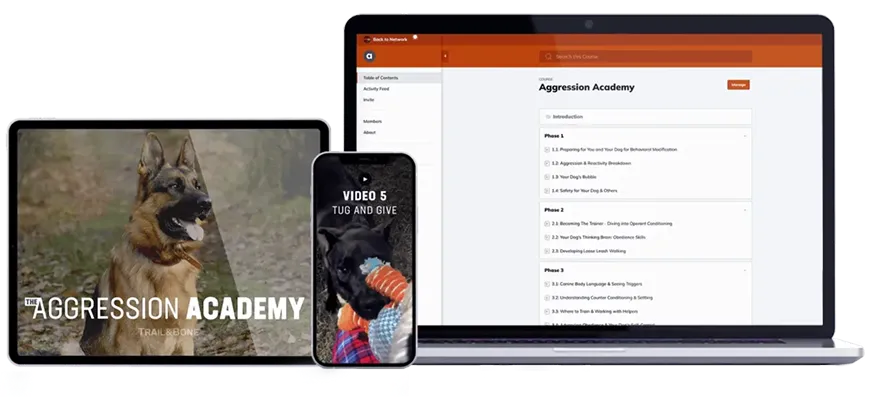
The Academy is structured as a step-by-step journey that builds up your dog's foundational skills before diving into advanced techniques, all designed to be easily digestible even for the busiest or most easily-distracted among us.
And the beauty of it? You don't need hours of training each day. Just ten minutes daily can yield tangible changes in your dog's behavior in as little as a few weeks.
What sets the Aggression Academy apart isn't just its effective, science-backed approach. It's the community of over 9,000 other dog owners and trainers all along for the journey with you. So with engaging video lessons, simple action steps, and real-time support from certified trainers Jessa and Joree, you’re never alone in the process.
It’s an investment in not just your dog's well-being, but also in building lifelong skills and a peaceful, fulfilling life together—all for a fraction of the cost of traditional training options.
So to sum up, the Bubble Theory offers a comprehensive, science-backed approach to addressing dog aggression and reactivity. By focusing on your dog's "bubble," you gain a unique opportunity to enact lasting behavioral change.
But it’s essential to remember that meaningful transformation requires patience, consistency, and the right training tools—exactly what you'll find in the Aggression Academy.
With expert guidance and a supportive community, you'll not only bring out the best in your dog but also enhance your skills as a pet parent.

There's no magic pill for perfect behavior, but the Bubble Theory—and the Aggression Academy—is as close as it gets to a definitive blueprint to a happier, calmer life with your four-legged friend.
Thank you for joining us in this breakdown of the Bubble Theory. May your journey in dog training be as enriching for you as it is for your best friend!
